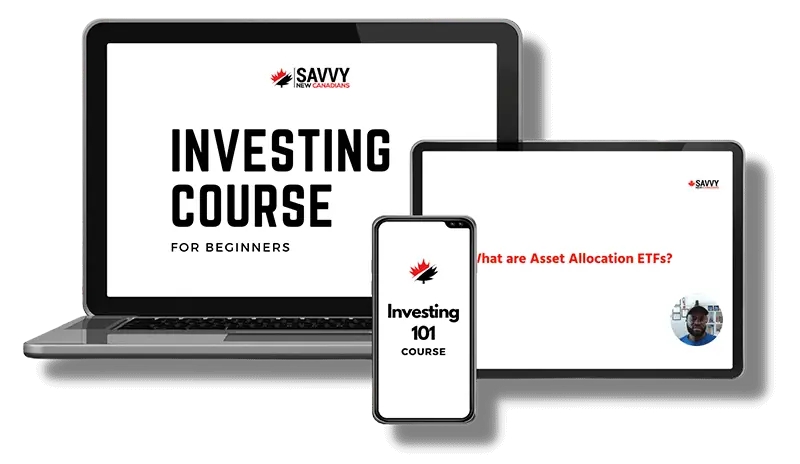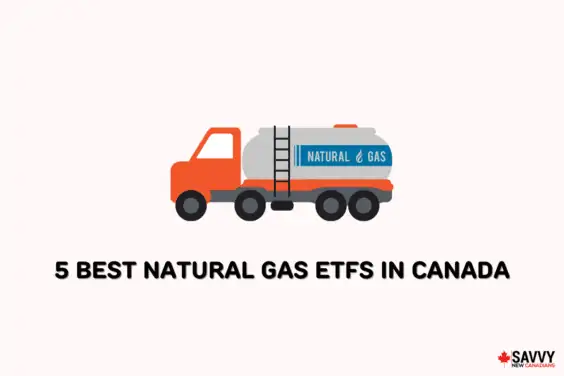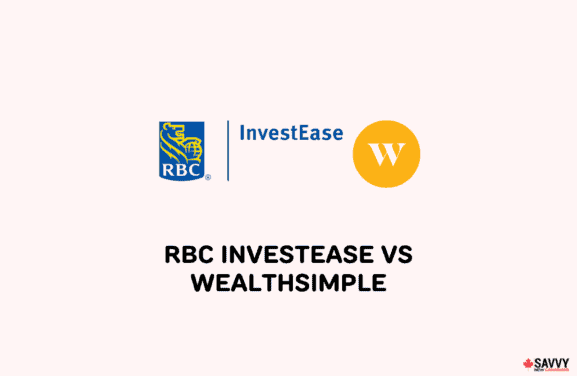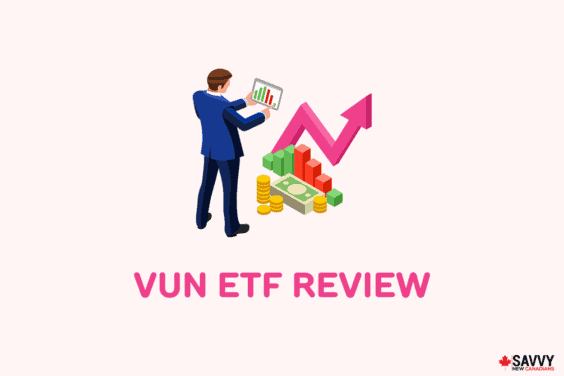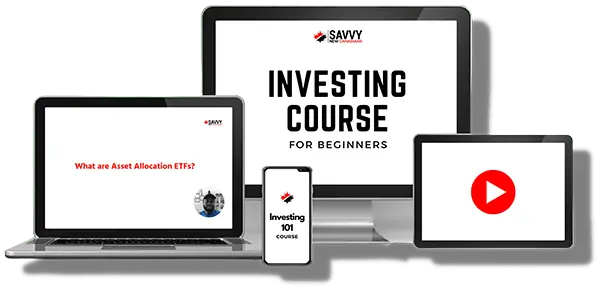This is a mini-glossary of investment terminologies you will come across frequently on your investing journey. They are basic terms you should know if you want to become a successful participant in the financial/stock markets and have a handle on your investments in general.
I attempt to define these investment terms using less technical language and in a way that hopefully conveys some meaning to the beginner who is just starting on the “Investing 101” journey.
Breaking down financial/investment jargon into “layman” language is tough as you stand to lose some of the more intricate and subtle meanings the terms are intended to convey.
Thankfully, we do not have to submit this piece of work to Professors of Finance to grade anytime soon. 😉
Here are some important investment terms and what they mean:
Alpha
Is a measure of how an active fund manager has performed compared to a benchmark index. For example, if a mutual fund outperforms its benchmark index by 1%, the Alpha is said to be “1.”
Assets
Is anything you own that is of value, such as home, land, car, boat. For investing purposes, assets include stocks, bonds, cash, commodities, and more.
Asset Allocation
This refers to the proportion of each asset in your overall portfolio i.e. how much of each investment do you own in the context of the overall value of your investments.
Each asset carries its own risks, and good money management requires that you allocate each asset in a way that fits your risk tolerance, expected returns, and investment time horizon.
Ask Price
This is the lowest price a seller is willing to accept per unit of a stock or other financial security. It’s also known as the offer price.
Balance Sheet
Is a financial statement showing a company’s assets (what they own), liabilities (what they owe), and shareholders’ equity. A balance sheet is a snapshot of a company’s financial position at a specific point in time.
Shareholders’ equity = company’s total asset – total liabilities
Bear Market
A market in which most investors are selling because they expect asset prices to fall. The price trend in a bear market is downwards.
You are considered to be ‘bearish” (a bear) on a stock if you are pessimistic about its prospects and intend to sell your holdings.
Beta
Is a measure of the volatility of a stock or other security compared to the general market. A beta greater than 1 infers that an investment is more volatile than the market, and if it’s less than 1, it is less volatile than the market.
For example, say a stock traded on the S&P/TSX exchange has a Beta of 1.50. This means that the stock is 50% more volatile than the S&P/TSX Composite as a whole (i.e. more volatile than the market).
Bid Price
This is the highest price that a buyer is willing to pay per share of a stock or other financial security.
Bid-Ask Spread
Is the difference between the bid and ask price for a stock. For a very liquid stock, the spread between the bid and ask price is narrow.
Blue Chip Stocks
Refers to the stocks (shares) of well-established companies that are known to consistently pay dividends and have withstood the test of time.
Blue-chip stocks generally have a large market capitalization.
Bonds
Is a debt instrument in which an investor loans money to a company, government, or other entity for a period of time in exchange for interest payments and a return of principal on specified dates.
Related: Bonds and Their Place in Your Portfolio
Bull Market
A market in which most investors are buying because they expect asset prices to rise. The price trend in a bull market is upwards. You are considered to be “bullish” (a bull) on a stock if you are optimistic about its prospects and intend to buy.
Capital Gain or Loss
This is the profit or loss you realize after selling an investment. For example, when you sell a stock/ETF/property for a higher price than you paid for it, you realize a capital gain and vice versa.
Capital gains are taxed more favourably than interest income or dividends since only 50% of a capital gain is taxable.
Capital losses can be used to offset or eliminate capital gains from three preceding years, or they can be carried forward to the future indefinitely.
Canadian Investor Protection Fund (CIPF)
Is a not-for-profit organization that provides insurance to member firms (financial institutions) and protects investors’ funds/assets up to $1 million if the member firm goes bankrupt.
The CIPF does not insure investors against losses resulting from normal trading activity or fraud.
Commodities
Is a generic product or material which is interchangeable with another product of its kind and which can be traded on a commodities exchange. Commodities include agricultural products like wheat, corn, soybeans; and precious metals such as gold and silver.
Related: Alternative Investments You Need To Know
Day Order
A trading order that is only good for the day it is placed. If trade execution does not occur by the close of the day, it is automatically cancelled.
Delta
Is a measure of the rate of change in the price of a derivative (futures, options) relative to the price of the underlying asset (stocks, bonds, commodities).
Derivatives
A security whose value is derived from the performance of other underlying assets. Derivatives are complicated financial instruments (assets) that are packaged on the back of other financial instruments, such as stocks, commodities, mortgages, bonds, and interest rates.
Examples of derivatives include futures, options, and swap contracts.
Diversification
Is the practice of making a portfolio less risky by holding more than one type of security. For example, when you combine stocks with bonds in your portfolio.
Dividends
Is a portion of a company’s profits (net income) that is paid to shareholders. Dividends may be paid periodically such as monthly, quarterly, semi-annually, or annually.
Dividend Payout Ratio
This is the percentage of a company’s earnings that is paid out as dividends to shareholders. The higher the payout ratio, the more attractive a stock is to dividend investors.
After paying out dividends from net income, a company is left with what is referred to as “Retained Earnings.”
Dividend Reinvestment Plan (DRIP)
Is an investing strategy that allows investors to automatically reinvest their dividends by buying more units of the assets/security instead of receiving cash. The plan gives investors an opportunity to save on transaction fees or commissions.
Dow Jones Industrial Average (DJIA)
Is a stock index of 30 major and publicly traded companies in the U.S. The price of company stocks is used as weighting for the DJIA, after adjusting for stock splits and dividends.
Is calculated by dividing a company’s net income by the number of its outstanding ‘common’ shares.
Equity
Also commonly known as “Stock” or”Share,” and represents ownership in a company. Equity in a company may be in the form of common or preferred shares.
Exchange Traded Funds (ETFs)
Is similar to an index fund, but trades on a stock exchange like a stock, with prices reacting to supply and demand throughout a trading day. ETFs are usually passively managed and have lower MERs than mutual/index funds.
Further Reading: All You Need To Know About ETFs
Fixed Income Securities
Refers to investments that pay investors fixed periodic payments (interest) on specified dates. At the end of the investing term (at maturity), the principal investment is also paid back to the investor.
Examples of fixed-income securities include bonds, T-bills, and GICs.
Further Reading: Understanding Fixed income Securities
Fundamental Analysis
Uses a company’s financial information as made available through its financial statements; business operations, relationship with suppliers, creditors and competitors, and other economic parameters, to evaluate its stock’s value.
Futures
Are contracts to buy or sell an asset at a future date and at a pre-determined price, as agreed upon by both buyer and seller. The physical product may be exchanged or parties may choose to settle in cash.
Futures are used to manage risk i.e. serve as a “hedge”. Day traders speculate on futures contracts with the aim of making money from price fluctuations.
Good Till Cancelled Order (GTC)
This order stays open until the defined trading conditions are met or till it is cancelled.
Hedging
Is an investing risk management technique in which an investor protects an investment against loss by making a secondary investment.
In other words, the investor wants to avoid a scenario where they lose all and so buy some level of insurance (hedging) to ensure that in the event the original investment fails, losses will be limited.
Income Statement
Is a financial statement that shows a company’s profitability over a period of time – usually one year. It is also referred to as a “profit and loss statement.”
Index
Index is a statistical measurement of the value of a security market. The security market that is being measured may be a national, regional, or global collection of stocks, bonds, or commodities.
An index may also represent specific sectors of the market, such as industry sectors like Financials, Energy, Health Care, and Real Estate.
Examples of some popular indices (indexes) include S&P 500, DJIA, and Nasdaq (U.S.), S&P/TSX Composite (Canada), Nikkei 225 (Japan), FTSE 100 (U.K.). The plural form of index is “indexes” or “indices.”
Further Reading: Index Investing For Beginners
Index Fund
Is a type of mutual fund that tracks a specific index and attempts to replicate the performance of a benchmark index by holding all the securities (stocks, bonds) in that benchmark index.
Index funds are passively managed and generally have lower management expense ratios (MERs) than mutual funds.
Examples of index funds and the benchmark index they track include:
- TD Canadian Index Fund (TDB216): tracks the performance of the S&P/TSX Composite
- Scotia Canadian Index Fund (BNS381): tracks the S&P/TSX Composite
- RBC Canadian Index Fund (RBF556): tracks the FTSE All Cap Domestic Index
Initial Public Offering
Is the initial price that shares of a company are sold when they move from being a “private” company to becoming a “publicly traded” company.
Limit Order
An order to buy or sell a security (stock) at a specified price. A limit order ensures that the trade is only executed at either the exact price specified or better.
Liquidity
Refers to how easy it is to buy or sell a particular security. A liquid stock can easily be bought or sold on a stock exchange without significantly affecting its price.
Liquidity encourages investors to trade securities since they know they can easily acquire and/or dispose of them. An illiquid security is not easily traded.
Load
Is a sales charge or fee that is levied when investors buy or sell mutual funds. When the fee is charged on the purchase of units of the mutual fund, it is known as “Front-end load.” If charged when you sell, it is referred to as “Back-end load.”
Loads are an additional expense and increase your transaction costs. No-load funds have become more and more popular.
Further Reading: Investment Fees in Canada
Long Position
A long position refers to the ownership of a stock. For example, if you own 1,000 shares of a certain stock, you are said to be “long” that stock.
Going “long” means that you anticipate a stock’s price will rise in the future and you are bullish on it.
Management Expense Ratio (MER)
The MER is a combination of fees charged for managing and administering a mutual fund or ETF. The MER includes a management fee (fees paid to the fund manager) and operating fees (fees for administration staff, audit, legal, stationery, and prospectus printing).
Margin Account
It is a trading account that allows an investor to use borrowed money to purchase investment assets.
Market Capitalization
This refers to the stock market value of a company. It is calculated by multiplying the total number of outstanding shares by its current market price per share.
Market capitalization is an indication of the size of a company in relation to its peers. Companies may generally be categorized as – Large-cap, Medium-cap, and Small-cap.
Market Timing
It is an investing strategy that attempts to predict market outcomes using fundamental and technical analyses.
For example, predicting that a stock would increase in price in the near future and buying at a “low” price in readiness for the rise in prices.
When the price of the stock goes up, the investor may sell it to capture a profit (profit-taking), move to cash, and stay on the sidelines till they see another “signal” to buy or sell. Essentially, investors using this strategy want to buy low and sell high.
Timing the market negates the benefits of long-term investing and often plays into our emotional weaknesses and behavioural biases.
Investors become prone to chasing trends, fall for loss aversion, confirmation, hindsight, and other biases that lead them to take unreasonable risks. Frequent trading may also increase transaction costs.
Market Order
A trade order put in by an investor requesting the purchase or sale of a security (stock) at the current market price.
Mutual Fund
This is a fund that pools money from several investors in order to purchase multiple securities that are actively managed by a fund manager.
Mutual funds typically charge higher fees (MER) than index funds or ETFs.
Nasdaq Composite (IXIC)
It is a stock index of thousands of companies, a majority of which are technology companies. The Nasdaq composite uses a market value weighting.
Non-Registered Investment Account
It is an investment account that does not provide a tax-shelter to your investment returns. Learn about registered vs non-registered investments.
Price-To-Earnings Ratio (P/E)
This ratio is used to value a company’s stock and whether it is overvalued or undervalued. It is calculated by dividing the current share price by the earnings per share (EPS).
P/E ratio = current share price/EPS
Using the P/E ratio, investors can assess a stock and decide how much they are willing to pay for it based on its current earnings. The P/E ratio is also referred to as a “price multiple.”
When assessing stocks, the P/E ratio should not be used as a standalone but should be considered in the light of other financial metrics before you decide on buying/selling a stock.
Over The Counter (OTC)
It is a decentralized market made up of dealers who connect with each other using telephone and computer networks.
Financial assets not listed on an exchange are often traded through the OTC market, including many debt instruments and derivatives.
Assets purchased through the OTC market may carry more risks due to illiquidity and a lack of transparency.
Prime Rate
Is the interest rate at which banks lend to their most creditworthy clients. Banks normally set their prime rate based on the lending rate set by the bank of Canada.
The prime rate is also used by financial institutions to determine the interest rates they charge on variable loans, mortgages, and lines of credit.
Portfolio
A collection of the different securities/investments owned by an individual investor or institution. A portfolio may consist of a mix of assets such as bonds, stocks, mutual funds, ETFs, cash and cash equivalents.
Prospectus
It is a document provided by a company or fund which discloses relevant information about a security so that investors are informed about what they are investing in.
For example, a prospectus produced by an investment firm may list all the mutual funds they offer, investment objectives and strategy of the fund, fund managers, management fees and other fund costs, tax considerations, risks associated with investing in the fund, rules to follow when purchasing, switching or redeeming funds, minimum investments, and some legal jargon.
Profit-Taking
Refers to when you sell an investment that has appreciated in price in order to convert your “paper” profit into cash.
Registered Education Savings Plan (RESP)
This is a registered account in Canada that enables parents to save for their children’s post-secondary education. The Canadian government provides a grant of 20 cents per 1$ you contribute, up to a maximum grant of $500 per year.
Earnings on the account are sheltered from taxes until your child starts to withdraw funds for college, at which time they pay any taxes due (at a much lower tax rate).
Registered Retirement Savings Plan (RRSP)
This is a retirement savings plan in Canada that enables you to save for retirement in an account that is not taxed until you start making withdrawals. The government sets an annual contribution amount that is a percentage of your income for the previous year, up to a maximum.
For 2022, the contribution amount is 18% of your earned income in 2021 or $29,210, whichever is less. Your contribution amount is also tax-deductible.
Further Reading: TFSAs vs RRSPs
Registered Investment Account
It is an investment account that allows you to save or invest tax-free until you withdraw your funds. Examples include the RRSP, RRIF, and RESP accounts.
The Tax-Free Savings account (TFSA) is also a registered investment, however, no taxes are levied on your returns even when you withdraw funds.
Risk
This is the probability of loss or the possibility that expected returns (profit) on an investment may not be realized.
Securities
An investment signifying a stake or ownership rights through shares (stocks) or debt (bonds) or other investment products that have value and which can be transferred or sold to another investor.
Short Position
It is a trading strategy that involves an investor selling a stock (security) they don’t own with the aim of making a profit when the price of the stock (security) falls.
If the stock’s price declines, the investor buys it back at the lower price, returns the borrowed stock to the broker, and makes a tidy profit.
S&P/Toronto Stock Exchange Composite (S&P/TSX)
This is the main stock market index in Canada which currently tracks about 250 companies. It uses a market-capitalization weighting similar to the S&P 500.
Standard and Poor’s (S&P) 500 – $SPX
It is a stock index of 500 of the largest publicly-traded companies in the United States. The S&P 500 uses market capitalization for weighting companies tracked by the index.
The S&P 500 is widely regarded as a representation of the broad U.S. stock market.
Technical Analysis
Is the forecasting of the future price movement of a security based on analyzing its past price history.
Investors who use technical analysis believe they can predict the future price behaviour of a security (stock) based on what they can read from its historical price patterns.
Technical analysis stands in contrast to the Random Walk Hypothesis, which posits that investors cannot predict stock prices.
Tax-Free Savings Account (TFSA)
This is a registered investment/savings account established in Canada in 2009. It allows Canadians to contribute money into a savings or investment account that is free from taxation. Any withdrawals or income earned (interest, dividends, capital gains) on the account are tax-free for life.
Every year, the federal government sets a contribution limit – $6,000 for 2022. Unused contribution room can be carried forward indefinitely to be used in future years.
Further Reading: 5 Ways To Invest in Your TFSA
Volatility
Is the rate at which the price of a security changes and moves up and down. Volatility is a measure of risk.
A stock whose price tends to move rapidly during a short period of time is said to exhibit high volatility. When the price barely moves or is stable, it is said to have low volatility.
Volatility is often symbolized in finance as sigma σ – also referred to as standard deviation.
Yield
It is a measure of your return on an investment and is calculated as a percentage. For example, for a stock, the yield is calculated using: Annual Dividends/Current Stock Price.
Investing doesn’t have to be so hard! For low-fees (as low as 0.4%), no-hassle investing, try Wealthsimple today. You get a $75 cash bonus when you sign up via our exclusive link and fund your account with $500 or more.
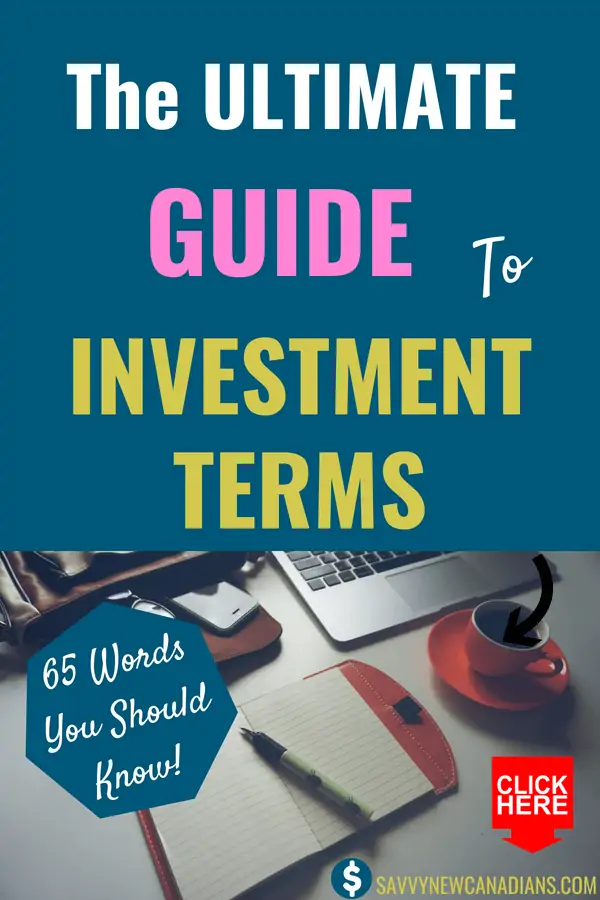
Related:
- 10 Strategies That Guarantee Your Investing Success
- Investment Risks All Investors Should Understand
- How To Invest in Stocks
- Best Canadian ETFs For Investing
- Best Canadian Bank ETFs
Investing doesn’t have to be so hard! For low-fees (as low as 0.4%), no-hassle investing, try Wealthsimple. Get a $75 cash bonus when you fund your account with $500 or more.

